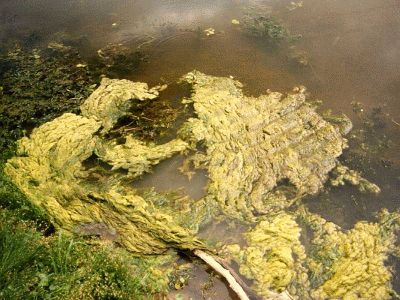By Mario Villarino, Texas AgriLife Extension Agent for Agriculture and Natural Resources, Hopkins County, [email protected].
As the hot days of summer reach Hopkins County, it is just gratifying to spend more time outdoors and is common to conduct recreational activities around ponds and lakes. It is common then to notice plant and algae growing in them. Filamentous algae starts growing along the bottom in shallow water or attached to structures in the water (like rocks or other aquatic plants). Often, filamentous algae floats to the surface forming large mats, which are commonly referred to as “pond scums.” There are many species of filamentous algae and often more than one species will be present at the same time in the pond. Filamentous algae has no known direct food value to wildlife.

(Texas A&M AgriLife Extension photo)
Submerged portions of all aquatic plants provide habitats for many micro and macro invertebrates (i.e. bugs, worms, etc.). These invertebrates in turn are used as food by fish and other wildlife species (e.g. amphibians, reptiles, ducks, etc.). After aquatic plants die, their decomposition by bacteria and fungi provides food (called “detritus”) for many aquatic invertebrates. Filamentous algae can be raked or seined from the pond.
Fertilization to produce a phytoplankton or algal “bloom” can prevent the establishment of filamentous algae if started early enough in the spring. Fertilization also produces a strong food chain to the pond fish.
Non-toxic dyes or colorants prevent or reduce aquatic plant growth by limiting sunlight penetration, similar to fertilization. However, dyes do not enhance the natural food chain and will suppress the natural food chain of the pond. Many types of mechanical removal devices are available that cut or chop up aquatic weeds. It is important to remember that many submerged plants regrow from fragments, so removal of cut fragments may be necessary to keep from spreading the unwanted plant.
Tilapia will consume filamentous algae but are a warm water species that cannot survive in temperatures below 55 F. Therefore, tilapia usually cannot be stocked before mid-April or May and will die in November or December. Recommended stocking rates are 15 to 20 pounds of mixed sex adult Mozambique Tilapia (Oreochromis mossambicus) per surface acre area. Tilapia are often not effective for vegetation control if the pond has a large bass population due to intense predation.
In Texas, stocking tilapia requires approval from the Texas Parks and Wildlife Department if the pond is in the designated “conservation zone” to ensure tilapia cannot escape and negatively impact imperiled native fishes. Tilapia must be purchased from a permitted seller regardless of zone.
The active ingredients that have been successful in treating Filamentous Algae include: Copper Based Compounds (Rated: Excellent) Diquat (Rated: Good) Alkylamine Salts of Endothall (Rated: Good) Flumioxazin (Rated: Good) Sodium Carbonate Peroxyhydrate (Rated: Good). Always read the product label for directions and precautions, as the label is the law. Click on the name of the product to see the label. Read the label for specific water use restrictions.
For more information on this or any other agricultural topic, please contact the Hopkins County Extension Office at 903-885-3443 or email me at [email protected].





